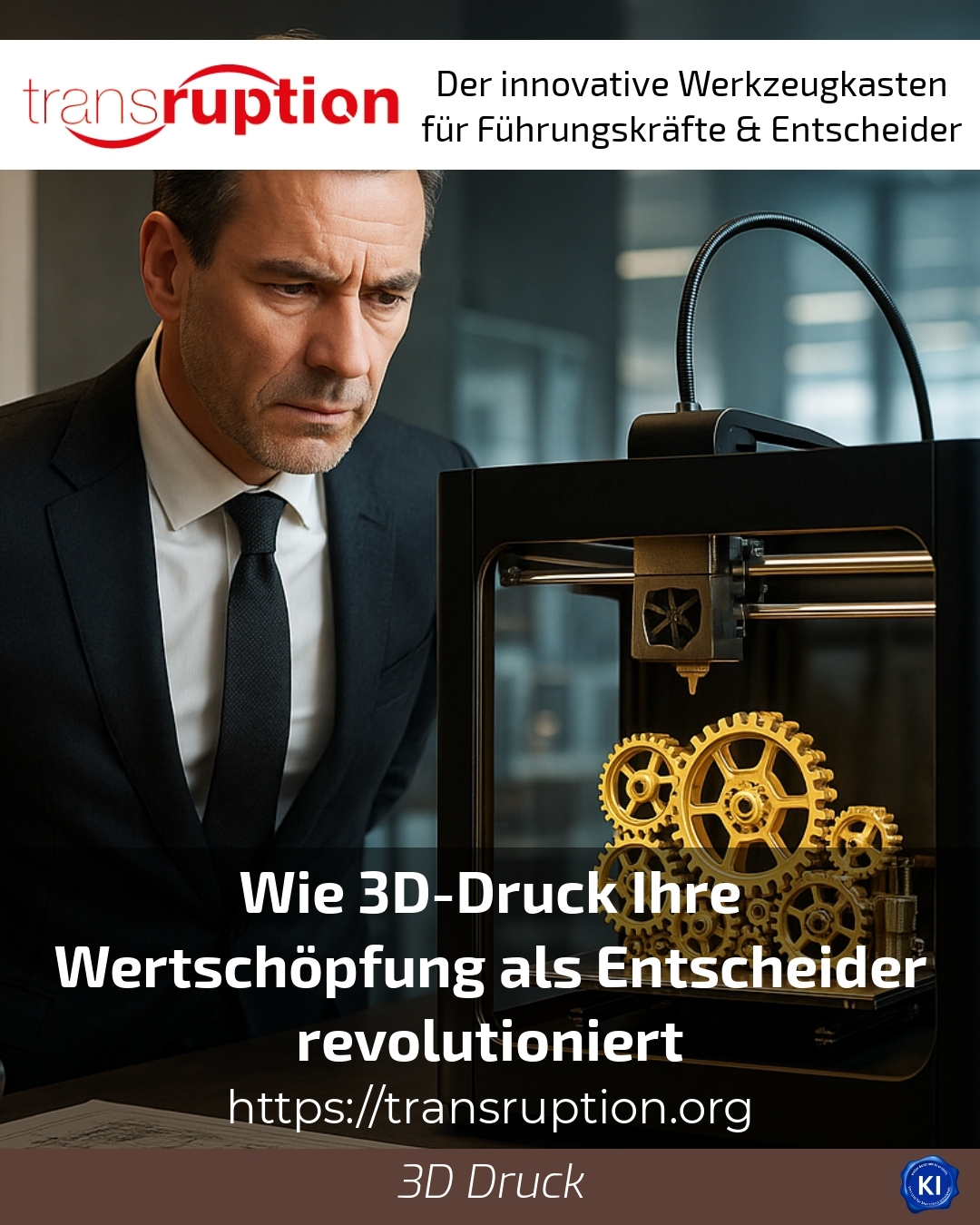How 3D printing is revolutionising your value creation as a decision-maker
Today, 3D printing opens up a wide range of opportunities for companies that want to optimise their value creation. This technology not only offers a new way of production, but also enables decision-makers to rethink entire supply chains and thus realise flexibility, efficiency and cost savings. Decision-makers involved in 3D printing often experience how the traditional limitations of manufacturing are being broken down.
More flexibility and agility in value creation
3D printing makes it possible to manufacture products much faster and more flexibly. Instead of weeks or months, the production of many components now only takes hours. This means that production can be adapted very easily to current demand. This agility in the production process ensures that companies can react more quickly to market changes. In addition, decentralised production using 3D printing significantly reduces transport routes, which speeds up product throughput and prevents bottlenecks.
In mechanical and plant engineering, for example, individual, complex components are often made up of several milled parts. With 3D printing, these assemblies can be replaced by a single, optimised part. This saves assembly time and reduces sources of error.
BEST PRACTICE at company XYZ (name changed due to NDA contract) The company was able to use 3D printing to produce individual components for specialised machines in-house. This resulted in shorter delivery times and less stock-keeping, as spare parts are manufactured as required. This greatly improved operational efficiency without the cost of expensive production abroad.
Cost savings through simplified supply chains
The use of 3D printing can not only reduce production costs, but also realise hidden savings. Traditional supply chains with long transport chains and warehousing of spare parts are expensive. 3D printing makes it possible to produce spare parts "on demand" directly on site. This reduces stock levels and drastically minimises transport costs - in some cases by up to 85 percent.
In addition, labour costs are reduced as 3D printing can be controlled intuitively and machines work largely autonomously. This gives companies greater independence from expensive foreign manufacturing.
BEST PRACTICE at ABC (name changed due to NDA contract) The company from the automotive sector produced spare parts for slow-movers directly in the warehouse using 3D printing. This significantly reduced storage costs. At the same time, customer satisfaction increased thanks to the faster availability of spare parts.
New business models and competitive advantages
3D printing is already enabling entirely new business models. Companies can produce customised small batches cost-effectively and thus respond better to customer requirements. Shorter product life cycles and rapid prototyping increase innovative strength. This results in products that are precisely tailored to the target group.
This results in competitive advantages through greater customer satisfaction and better service levels. The technology is increasingly perceived as consumer-friendly and even supports local employment through the relocation of production processes.
BEST PRACTICE at DEF (name changed due to NDA contract) Toolmaking has benefited from 3D printing, as standard brackets are now lighter and cheaper to produce using 3D technology instead of steel. This significantly reduced unit costs and delivery times could be shortened considerably. This also opened up new customer segments for the company.
Integration and support during implementation
Decision-makers are often faced with the challenge of how 3D printing can be efficiently integrated into existing processes. The technology is complex and requires a rethink of processes and production. Accompanying advice and support services are therefore helpful in providing impetus and facilitating the introduction.
Many companies report that experienced support in the project environment plays a key role in maximising potential. The challenge often lies in selecting suitable materials, choosing the right printers and adapting designs to additive manufacturing.
My analysis
As a driver of innovation, 3D printing is revolutionising value creation in many industries. Decision-makers benefit from greater flexibility, significantly lower costs in the supply chain and the opportunity to develop new business models. It is important not to view the use of technology in isolation, but as an integral part of the corporate strategy. With accompanying coaching and impulses, the advantages can be better utilised and the introduction in the company can be successfully designed.
Further links from the text above:
[1] 6 underestimated benefits of 3D printing for your supply chain - Part 1
[2] 6 underestimated benefits of 3D printing for your supply chain - Part 2
[3] 3D printing in the company: Advantages, integration and ...
[4] Supply Chain 4.0: Revolution in logistics through 3D printing
[5] Study: 63 % of German companies use 3D printing
For more information and if you have any questions, please contact Contact us or read more blog posts on the topic TRANSRUPTION here.
















